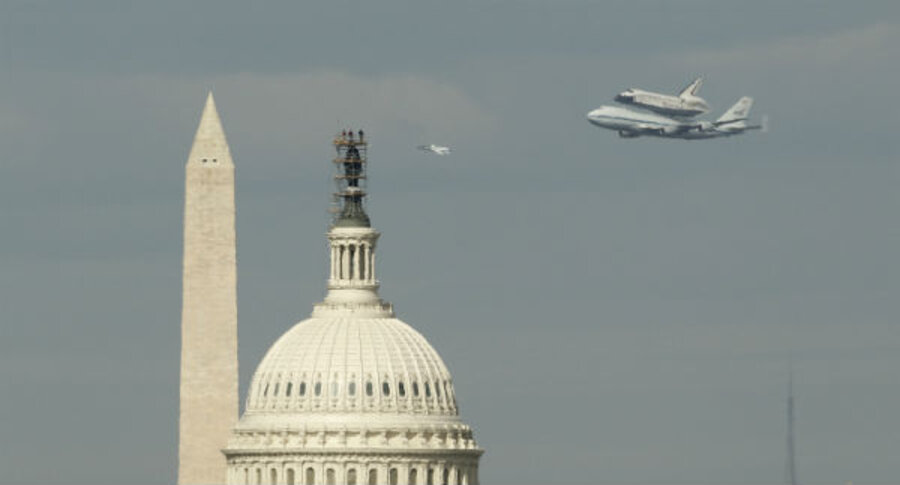Look! Up in the sky! It's Space Shuttle Discovery.
Loading...
| Washington
What a day to live in Washington, a city disparaged by so many Americans.
At 9:30 this morning, I laced up my office set of tennis shoes, pushed back from my desk, and walked down to the Washington Monument to witness the final flight of the Space Shuttle Discovery. After three decades of space travel, this aeronautic workhorse was flying piggy-back on a modified Boeing 747 to its resting place at the Smithsonian Air and Space Museum annex in northern Virginia.
People streamed in modest rivulets toward the National Mall: tourists and bureaucrats, people of all races, Republicans and Democrats, foreigners and school kids. Just before 10 a.m., from the direction of the State Department, the jet and its distinct roof-top baggage rumbled low and slow across the mall, bisecting the space between the Washington and Lincoln memorials and swooping toward the Jefferson Memorial. The crowd, not as big as I expected, let out a quiet cheer.
They pointed toward the sky as if they were looking at Superman. And in a way, they were. Discovery represents a super achievement in the American space program, flying the most missions of any of the shuttles.
And she cut a noble profile, coming from behind the freshly leafing trees, breaking out into the open amid a blue and partly-cloudy sky. People clapped quietly, called out "cool" and "awesome," and lamented the demise of the 30-year space shuttle program. And of course, everyone got it on video on their phones.
Spectators hung about hoping for an encore. They were not disappointed. Within a few minutes, there she was again, circling back, accompanied by a small escort jet, this time flying directly over the south lawn of the White House. I saw her make two more leisurely passes over the area before I headed back to work. A generous show for all. Indeed, a reflection of the generous and hopeful American spirit that unites us.
As a journalist in the nation's capital, it's easy to get cynical about the state of the country and the state of our politics. But then something like this comes along as a reminder of the country's past accomplishments and the possibilities ahead.
Today is a great day to be an American. And, dare I say it? To be a Washingtonian.







